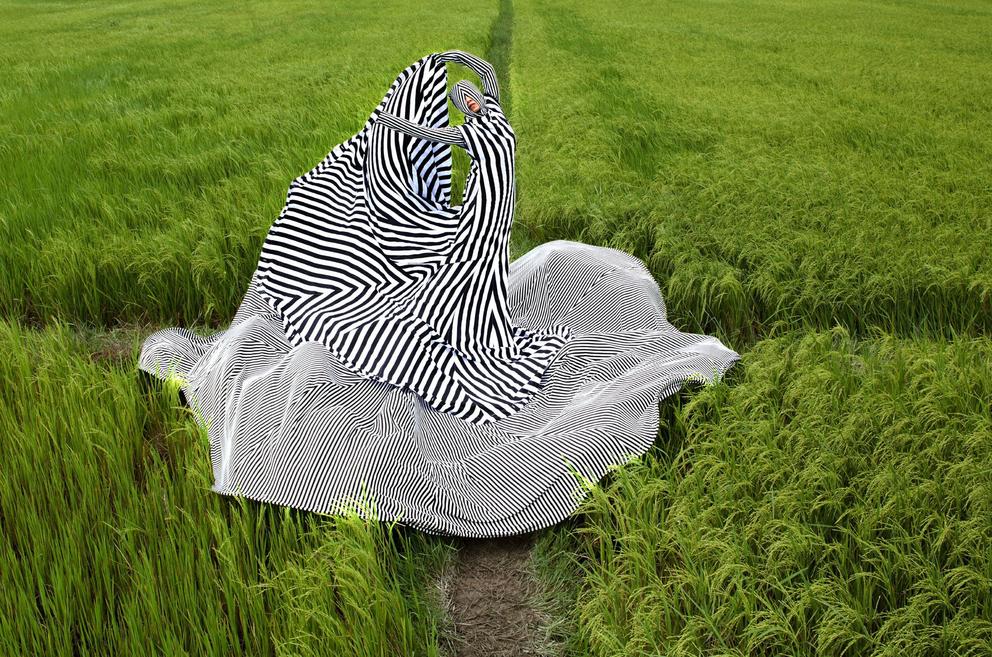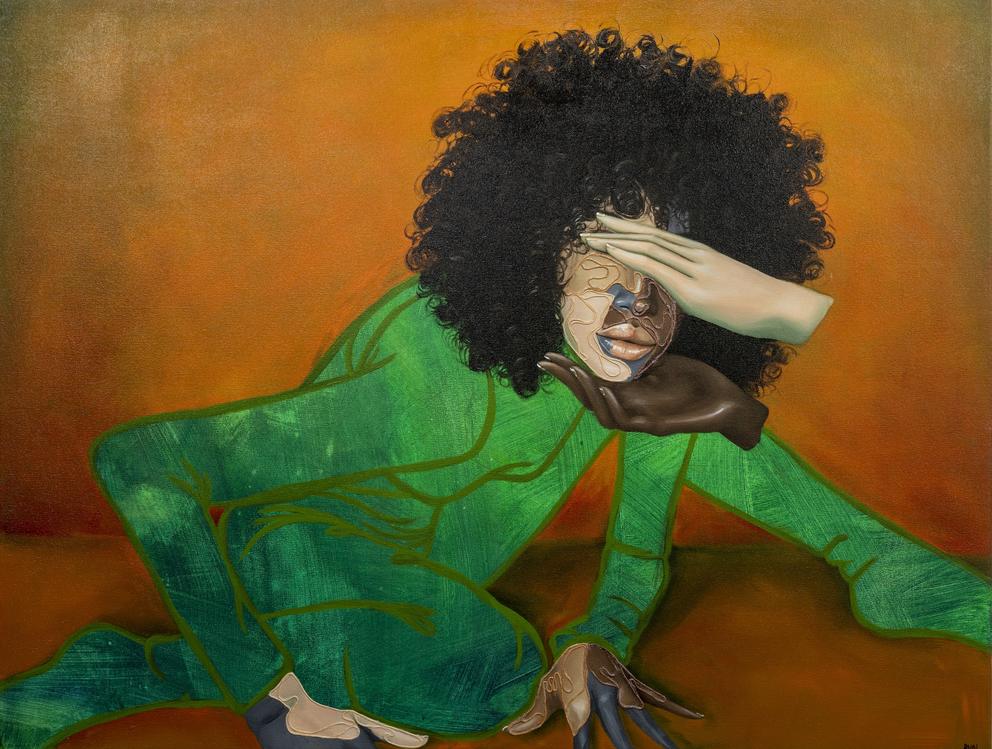This is good news for those of us who in recent years felt the fest had lost its way. Under the direction of mammoth producer AEG Presents, Bumbershoot had gradually traded the creative oddities and locally conjured surprises it was founded upon in favor of huge musical acts — and huge ticket prices to finance them.
ArtSEA: Notes on Northwest Culture is Crosscut’s weekly arts & culture newsletter.
But for its 50th anniversary celebration, Bumbershoot (Sept. 2 - 3) has been reimagined with an eye toward serendipity, facilitated by a full slate of unusual acts — from pole dancing to pogo sticking to double-dutch jump-roping and something called “More Cowbell” at Memorial Stadium.
Seattle dance company Malacarne will perform around the grounds, and the fabulous Flatstock poster exhibition will be plastered across the Armory. You’ll find 50 years of Bumbershoot photos, courtesy of Photographic Center NW. And for the first time in a long time, the visual arts component of the festival will be actually visible.
In recent years, organizers seemed to be sequestering visual arts in a series of smaller and smaller rooms, like a parent trying to wean a child off a blankie by cutting it into diminishing squares.
This year, however, thanks to Seattle arts instigator Greg Lundgren — one third of Bumbershoot’s new programming team New Rising Sun — art will take ownership of the voluminous Fisher Pavilion, as well as in the Pacific Science Center courtyard.
Reviving the tradition of Out of Sight group exhibits, which Lundgren established as an indie alternative to Seattle Art Fair back in 2015, he brought in four talented curators with Northwest roots — Roya Amirsoleymani, Jaleesa Johnston, Rana San and Emily Zimmerman — to select the 60 diverse artworks on display.
When I visited during the installation process, the Fisher Stage (which will host bands like Brittany Howard, Pussy Riot and Descendants) was under noisy construction immediately outside the open garage doors of the pavilion.
“It’s kind of like plopping a fine art show into a carnivalesque atmosphere,” Amirsoleymani commented. “We’ll see how it goes!”
Music revelers on the grassy Fisher lawn may be drawn into Out of Sight by a certain striking garment: Tacoma artist Anida Yoeu Ali’s “Vertigo Dress” made of black-and-white striped lycra. It will hang upside down from the middle of the pavilion ceiling, its immense skirt (6 yards in radius) tornadoing toward a topple of red plastic stools. (A film of Ali performing in the dress is included among the many video installations.)
The perimeter of the pavilion has been given the gallery treatment, with temporary white walls showcasing the diverse collection of paintings, prints, sculpture, textiles and videos by artists across the Pacific Northwest.
Some radiate with a sense of place: Mary Ann Peters’ light-handed, entrancing tapestries that suggest dream landscapes; Maria Zamora’s vivid floral print on fabric, a “reimagined jungle,” she says, based on both rainforest hikes with her parents in Venezuela and tropical plants at the Volunteer Park Conservatory.
Others encourage engagement. Portland artist Ella Ray uses boldly colored sandwich boards to pull your attention away from music for a moment with prompts like, “Does it feel good?” and “Can you trace it back to the source?”
Amirsoleymani said the aim is to “convert audiences to participants,” and maybe even spark “an examination of self within the context of an arts space.” The questions also give you something to mull in the beer garden.
Participation can also be found in a spin on a 1970s conversation pit, built by Seattle artists Stefan Leandro Gonzales and Sean KJ Sullivan. The two were hammering together an oversized couch-like construction when I stopped by.
“Artists and architects have grand ambitions,” Gonzales explained. “If you build this pit, we’ll have this lovely home and talk about grand ideas. But you really end up talking about groceries and kids’ school grades.”
While pointing out that utopian ideals are rarely achieved, Gonzales says his installation can still be a place of reflection, located among the Pacific Science Center’s reflecting pools. “Maybe someone just needs five minutes away from Bumbershoot,” he says. (We usually do.) The piece itself will be in conversation too, with a parallel 8-by-8-foot neon square placed in one of the pools.
If you want to keep the art discoveries going beyond Bumbershoot, head to the Central District where the recent installation Femme Noire (through Sept. 30) has created a new reason for an art walk. A collaboration by Wa Na Wari, Seattle Art Museum and blackpuffin (out of Chicago), the outdoor exhibit celebrates the work of Black women artists from around the world, including the Northwest.
Most of the images feature the faces of women. Local painter Bonnie Hopper contributed a portrait of a modern woman, dressed in the artist’s trademark patterned fabrics. Kiki Turner’s figure is also adorned in patterns, echoed by the plants around her. Aramis O. Hamer, also Seattle-based, shares a psychedelic image of the back of a woman’s head — or is she an alien, coming to share wisdom?
I talked about the project with Wa Na Wari curator Elisheba Johnson, who said when choosing the locally created artworks she was focused on big visual impact. “Pieces that say a lot on the surface,” she explained.
The hope is that the artworks will catch people’s eyes as they walk by — either day to day or perhaps during Wa Na Wari’s upcoming Walk the Block festival (Sept. 30), featuring a slew of arts and performance outdoors.
You’ll find the Femme Noire pieces hung from light posts and at Black owned businesses, mostly along 23rd Avenue between East Union and Jackson streets (see the map). A previous iteration of the project in Atlanta featured wheat-pasted images on buildings, but given our weather concerns, the images here have been reproduced on vinyl.
“People think Black folks don’t live in the Central District anymore,” Johnson noted. “This location helps emphasize that Black artists are present in the neighborhood. We’re here. We’re working.”
Local pieces rub shoulders with those by Cameroonian, Jamaican, Senegalese, Haitian, Nigerian and Guyanese artists, stirring up a sense of global camaraderie. Johnson encourages people to walk up to the works in person. “It’s important to feel an artwork’s scale in relation to our bodies,” she says. Not to mention, she adds, “These are badass artists from all over the diaspora.”
Get the latest in local arts and culture
This weekly newsletter brings arts news and cultural events straight to your inbox.





